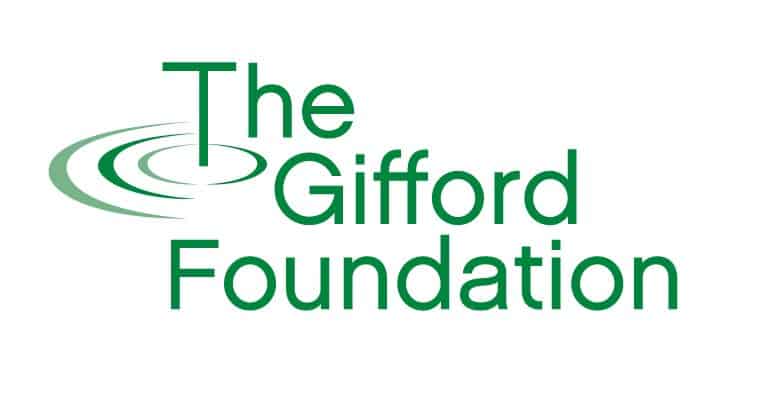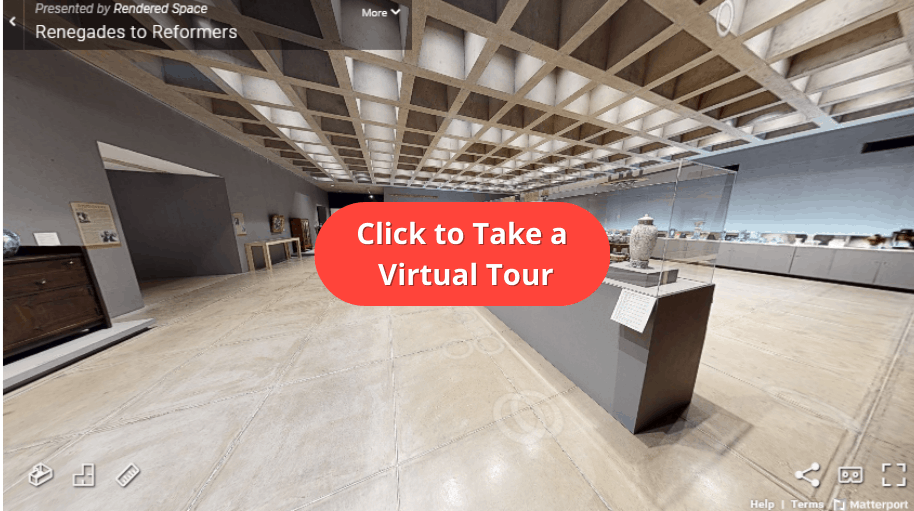Re-imagining Arts Access at the Everson
Published: February 1st, 2021
Accessibility has become a top priority for arts organizations, and it takes many forms. While some efforts are focused directly on surviving the coronavirus pandemic, others are designed to break down the barriers that have historically kept communities of color from participating in these institutions. The leadership at the Everson Museum of Art is working to connect these initiatives towards a common goal of building connections with larger and more diverse audiences.
The Everson Museum of Art is expanding virtual access and updating its collections in the hopes of building new and and more diverse audiences.
Darrell Buckingham is an Everson board member who has seen firsthand how the events of 2020 have sent shockwaves through the Museum: COVID drastically limited their ability to bring the public inside, while the George Floyd murder set off a deep introspection about who their “public” was, and who was being left out. For Buckingham, the absence of people of color from the Museum’s audience captured a disturbing irony. “Wouldn’t it be nice if the people who frequented the museum were as diverse and cultured as its collections?”
Last year, The Everson updated their mission statement to include this goal front and center:
“Through dynamic and meaningful encounters with modern and contemporary American art, the Everson Museum of Art engages diverse communities, inspires curiosity and lifelong learning, and contributes to a more vital and inclusive society.”
Buckingham points out that the arts have historically carried with it a “hoity toity-ness” that is leveraged to determine who should and shouldn’t be there. “Part of the mission of the Everson is to change that,” he says. In the summer of 2020, they began the process of converting their Community Engagement Committee to an Equity and Engagement Committee and invited members of the community to join in addition to Everson staff and board members. Their mission is to serve as an equity lens as decisions are being made about the Museum’s future, helping to guide the decision-making process.
New software options allow visitors to “walk” through the museum remotely. Click the image above to try it out.
One of the most important steps the Everson is taking is the acquisition of collections that include artists of color and women artists. In October, they made national headlines when they decided to sell their 1946 Jackson Pollack original Red Composition for $12 million at a Christie’s auction. While some of the funds were used for the general care and preservation of their existing collections, most was dedicated specifically to “refining and diversifying the Everson Museum’s collection to focus on works by artists of color, women artists, and other under-represented, emerging and mid-career artists,”
the Everson said in a statement. “We can bring in patrons of different backgrounds, but what are they looking at? What are they connecting to?” asks Buckingham. “It’s important to have art that’s reflective of something folks from different backgrounds can feel.”
At the same time that the Everson was working to be more inclusive, the coronavirus pandemic added another priority to their list: virtual access. Like many arts institutions, they began to develop ways to offer their shows digitally. A Virtual Programming section was added to their website, allowing visitors to “walk” through the Museum’s collections as well as watch guided video tours. A grant from Gifford helped fund the mission of “taking the museum online” by supporting the digital programs and strategies that allow for virtual access.
These resources not only provide free access to much of the Museum’s contents, but also offer a pathway for people with transportation challenges, irregular schedules, or other obstacles to enjoy the Everson. Board Member Ryan Maness says that the response has been overwhelmingly positive, and that there is “no question” that many of these resources will be offered even once the pandemic is over. Darrell Buckingham sees a strong parallel between the virtual access project and the diversity initiatives:
The Everson was the first museum designed by internationally-acclaimed architect I. M. Pei.
Both Buckingham and Maness are graduates of The Gifford Foundation’s Nourishing Tomorrow’s Leaders (NTL) program – a nine-week course designed to prepare individuals to be effective board members and to understand the importance of diversity within nonprofit leadership. Maness says that the experience gave him a newfound appreciation for the high impact role public interest boards play in community decisions. “Public interest boards are so pervasive and do so many things, but if you haven’t thought about them or what they are, they can seem very obtuse. But once you see them – they are everywhere.”
In addition to teaching the duties, roles, and responsibilities of being a board member, Maness says that the most powerful part for him was connecting with the other people in the program. “The biggest thing I got out of it was a general sense of inspiration from the kind of work that people were doing,” he says. “The fact that I was one of two white guys in the room was unusual and there was a ton of value in that for me.” He remembers being especially impressed by one participant who was still in high school and showed up each week after her classes got out. Seeing the amount of intensity brought by other NTL participants made him take the role of board member more seriously by setting a high standard of commitment. Maness graduated with a much broader understanding of racial equity and diversity along with a drive to put those values into action. “It’s instilled into you that you shouldn’t be afraid of shaking up the status quo.”
For Buckingham, NTL helped him appreciate value and perspectives that he brings to the table – especially in the boardroom. “NTL has been great in reminding me that who I am as an individual is extremely important, and that brings value to any table that I sit at.” Buckingham says that his identity and experience as a black man has been a valuable resource as he helps the Everson diversify its collections and attract new audiences. “I look like the person that you have trouble bringing in the door. I’m not the expert and I don’t speak for all black men of color, but it’s important that you listen to my point of view and my life experience as someone who grew up here – I’ve been here all my life.”
As arts organizations pivot their operations in response to coronavirus, it opens the door for growth and change in many arenas. The Everson’s work is a reminder that the pandemic is not an excuse to delay DEI (diversity, equity, and inclusion) efforts. Instead, it provides an opportunity to integrate those principles as we rebuild.



